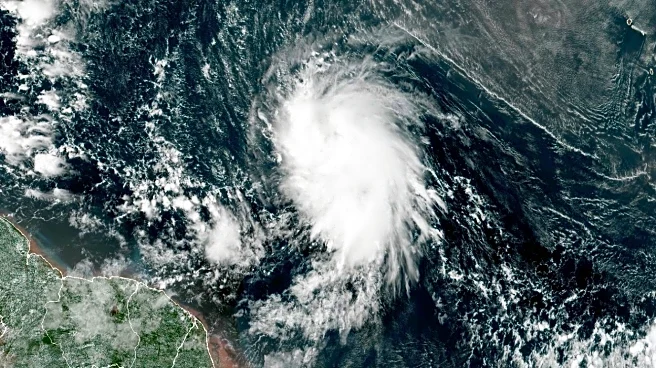What's Happening?
The expiration of the National Flood Insurance Program during the recent federal government shutdown has put coverage for millions of homes at risk. This development is affecting home closings and buyers in flood-prone areas, as insurance coverage is a critical factor in real estate transactions. An analysis in Miami and Tampa indicates that homes with lower flood risk have experienced faster price appreciation over the past decade. This trend highlights changing buyer preferences, with a growing emphasis on flood risk data in home-buying decisions. Younger buyers are leading this shift, prioritizing properties on higher ground. Tools such as updated FEMA flood maps and private resources like Flood Factor are increasingly used by buyers to assess flood risk and make informed decisions.
Why It's Important?
The expiration of the National Flood Insurance Program has significant implications for the real estate market, particularly in flood-prone areas. Rising flood insurance costs are becoming a major concern for homeowners, potentially affecting property values and purchase decisions. As awareness of flood risk increases among buyers, the real estate market is witnessing changes in how properties are valued and sold. This shift emphasizes the importance of understanding and addressing flood risk in property transactions. Sellers and buyers must prioritize preparation and transparency to navigate the evolving landscape of flood risk in real estate. The trend towards prioritizing flood risk data could lead to a reevaluation of property values, impacting both buyers and sellers in the market.
What's Next?
As buyers become more aware of flood risks and their implications, the real estate market is expected to continue evolving. The predicted significant change in evaluating flood risk within the next decade suggests that both buyers and sellers will need to adapt to new market dynamics. Real estate professionals may increasingly rely on tools like updated FEMA flood maps and private resources to provide accurate flood risk assessments. This could lead to more informed decision-making and potentially alter the landscape of real estate transactions. Stakeholders, including government agencies and insurance companies, may need to address the rising costs of flood insurance and its impact on property values.
Beyond the Headlines
The shift in buyer preferences towards properties with lower flood risk may have broader implications for urban planning and development. As more buyers prioritize flood risk data, there could be increased demand for properties on higher ground, potentially influencing zoning and construction practices. This trend may also prompt discussions on climate change adaptation and resilience, as communities seek to mitigate flood risks and protect property values. The evolving real estate market could drive innovation in flood risk assessment tools and technologies, offering new opportunities for businesses and policymakers to address environmental challenges.












